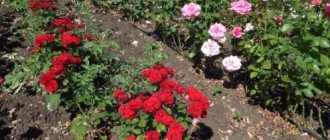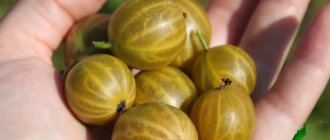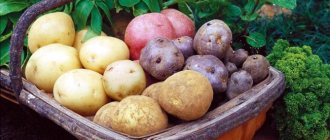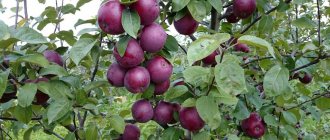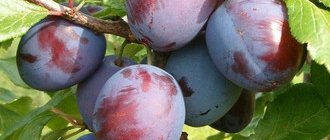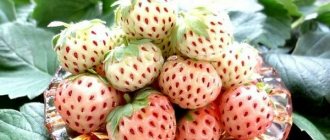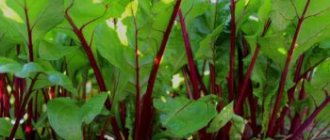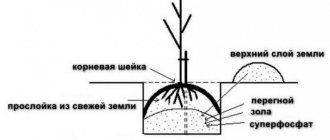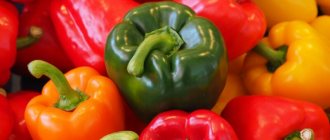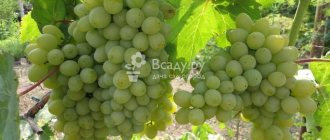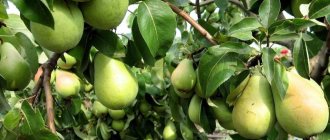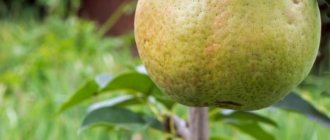Home Country garden
Surely, when asked which variety of cherries is best to plant on the plot, every gardener will have his own opinion. And no wonder - some people like large varieties of cherries, which are distinguished by their sweet taste. Others believe that the best variety of cherries is the one that has the true sourness inherent in this type of fruit and berry crop, and lovers of sweet berries should cultivate cherries. Still others, when describing cherry varieties that are optimal for growing in the garden, will name those that have the greatest frost and drought resistance. Check out the photos, names and descriptions of cherry varieties suitable for growing in the middle zone.
- 2 The best varieties of the largest cherries
- 3 What variety of cherries can be planted on the plot (with video)
- 4 The best varieties of cherry wood
- 5 Which varieties of cherries are best planted in the middle zone
- 6 Description of the most delicious varieties of cherries
The best winter-hardy cherry varieties for the middle zone
Growing cherries in the photo
To begin with, we present to your attention photos and descriptions of cherry varieties with increased winter hardiness.
Cherry variety “Ukrainian” in the photo
Cherry berry “Ukrainian” in the photo
Ukrainian. Comes from Vladimirskaya (Parenteleva). The tree or bush is highly developed, with a hemispherical, widely spreading crown, with weakly hanging ends of the middle and lower branches. This cherry variety is winter-hardy, high-yielding, early-fruiting, and early. Reproduces mainly by root suckers. Flowering early.
It bears fruit on one-two-year-old wood, which makes it different from Vladimirskaya (Roditelevskaya). It begins to bear fruit from the 3rd year. During the period of greatest harvests (9-20 years) it produces 10-24 kg per tree on average, and from individual trees up to 40-50 kg.
The fruits are medium-sized, about 3 g in weight, flat-round, dark purple, almost black, with dark pink flesh and thick dark red juice. The taste is good, sweet, with slight acidity. The stone is medium, flat-rounded, weight 0.26 g.
The fruits ripen in early July.
Consumption - fresh (the best dessert variety) and for technical processing: for wine, extracts, jam and other products. Transportability is satisfactory.
Cherry variety “Fertile Michurina” in the photo
Cherry berry “Fertile Michurina” in the photo
Fertile Michurina. The tree is low-growing, up to 2 m in height, with a widely spreading crown and hanging ends. This is one of the best winter-hardy cherry varieties, characterized by high yield. Flowering and ripening later.
It begins to bear fruit from the 3rd year. The name of this cherry variety speaks for itself - this form is very fertile. During the period of increasing productivity (4-9 years) it produces an average of 0.5-10 kg of fruit per tree, during the period of highest productivity - 12-16 kg per tree, and from individual trees - up to 20-25 kg.
The fruits are large, weighing about 4 g, round, dark red, on long stalks. The pulp is juicy, with pink juice, mediocre sweet and sour taste. The stone is large, oval, weight 0.35 g.
The fruits are harvested in mid-late August.
Consumption - fresh, but mainly for technical processing: for juices, wine, jelly, preserves, compotes.
Cherry variety “Vladimirskaya” in the photo
Cherry berry “Vladimirskaya” in the photo
Vladimirskaya (Roditelev). A tree or bush of moderate development, with a spreading crown with drooping branches. The variety is winter-hardy, productive and early-bearing. It begins to bear fruit from the 3rd year. Flowering early. During the period of increasing harvests (4-8 years) it produces up to 8 kg of fruit per tree, during the period of the heaviest harvests - 8-10 kg, and from individual trees - up to 30 kg.
The “Vladimirskaya” cherry variety has medium fruits, about 3 g in the photo
The “Vladimirskaya” cherry variety has flat-rounded, dark red, almost black fruits in the photo
As you can see in the photo, this cherry variety has medium-sized fruits, about 3 g, flat-round, dark red, almost black.
The pulp is dark pink, with thick, dark red juice, good, sweet, slightly acidic taste. The stone is medium-sized, flat-rounded, weighing 0.27 g.
Fruit ripens in early July.
The best variety for fresh consumption and technical processing: for wine, extracts, jelly, jam, etc.
How to plant cherries Talisman
To plant Talisman cherries, choose well-lit, windless places. The area is suitable at a short distance from hedges, buildings, as well as moderate elevations. Planting in acidic soils, places where groundwater is closer than 1.5 meters to the surface of the earth is undesirable.
How to choose a seedling
When choosing a seedling of the Talisman variety, you should pay attention to the following:
- the roots are represented by a branched system without external damage;
- the cherry root plexus should not be dry;
- there are no violations of the bark or areas open to it on the branches;
- The trunk and branches are somewhat elastic and resilient.
Dates planting scheme
Talisman cherry seedlings should be planted in the spring, after the ground has completely thawed. When planting in autumn, there is a danger of the root system freezing even after insulation work. However, preparations for planting are carried out precisely at this time. The events are presented as follows:
- at the planting site, dig a hole twice the size of the root plexus of the Talisman variety seedling;
- when digging, the fertile layer should be separated into a separate pile;
- A couple of buckets of manure or fresh compost mixed with a fertile layer of soil are placed in the hole.
Pit preparation
Preparing the pit and planting the Talisman cherry seedling are carried out in the order below:
- In a hole prepared in the fall for planting a tree, a depression with dimensions of 50x50 cm is made, allowing the seedling's root system to be placed freely.
- Fertilize the soil with organic matter. The amount of applied composition should not exceed 10 kg per 1 m2.
- The soil composition is supplemented with inorganic fertilizers (superphosphates, saltpeter). The concentration should not exceed 0.2 kg per 1 m2.
- To give the Talisman variety seedling additional support, a one and a half meter wooden peg is driven into the edge of the hole. After planting, the plant is tied to it.
- The seedling is placed in the prepared recess. The roots are straightened. After waking up, the earth is lightly compacted.
- Soil is poured around the circumference for periodic watering. The first moistening of the soil is carried out with two or three buckets of water.
Planting is completed by mulching the cherry tree trunk area using a mixture of soil and peat.
The best varieties of the largest cherries
Now read the description of cherry varieties for central Russia, distinguished by their large berry size.
Here you can see photos of cherry varieties, the descriptions of which are given below:
Beauty of the North. The variety was obtained by I.V. Michurin by crossing early Vladimir cherry with Winkler white cherry.
The trees are vigorous, with a sparsely branched, oval-spreading crown covered with large leaves.
Cherry variety “Beauty of the North” in the photo
Cherry berry “Beauty of the North” in the photo
In the region, the variety is medium-winter hardy and medium-yielding, with early fruit ripening. It begins to bear fruit at 3-4 years of age. At the age of full fruiting (12-20 years) it produces an average of 8-12 kg of fruit per tree. Flowering is mid-late.
This is one of the best varieties of large cherries with fruits weighing about 5 g, light pink, flat-round, shiny, with soft, very juicy light pulp and juice with an excellent, sweet-sour taste. The stone is large, round, weight 0.35 g.
Ripening - at the end of June, mass harvest - in early July, end of harvest - in mid-July.
Not very suitable for transportation. The best dessert variety. The fruits are good for jam, compotes, etc.
Cherry variety “Lyubskaya” in the photo
Cherry berry “Lyubskaya” in the photo
Lyubskaya. One of the best Central Russian varieties. It has been known in the region for a long time, but is not yet widespread.
A low tree, up to 2-2.5 m, with a hemispherical, medium-dense crown, covered with large dark green leaves.
The variety is medium winter hardy. The main characteristics of this cherry variety are high yield and early fruiting. It begins to bear fruit from the 3rd year, the yield increases quickly. During the period of increasing productivity (4-9 years) it produces an average of 1.2 to 12 kg of fruit per tree, and during the period of highest yields (10-20 years) - 16-30 kg. Flowering later.
The fruits are large, weighing 3.8 g, flat-round, dark red, with juicy pink-red pulp and juice of a sweet and sour mediocre taste. The stone is medium, round, weighing 0.27 g.
The fruits ripen on July 20-25, mass harvest - July 22-30, end of harvest on August 5-10. They tolerate transportation well.
Consumption - fresh, for technical processing (jams, wines, juices) and for home preparations - marinades, etc.
Cherry variety “Large-fruited Volga” in the photo
Cherry berry “Large-fruited Volga” in the photo
Large-fruited Volga . A tree of medium vigor, with a rounded, medium spreading crown. The variety is winter-hardy and high-yielding, with a rapid increase in yields over the years. At the age of 7-8 years it produces up to 10 kg of fruit.
This is one of the largest varieties of cherries: its fruits reach 4-6 g, with an average weight of 4.5 g, oval-round, narrowed towards the apex, somewhat compressed at the seam, dark burgundy, glossy. The pulp is dark red, like the juice, medium dense, juicy, sweet and sour, good taste. The stone is quite large, weighing 0.3 g, lagging behind the pulp.
The fruits are harvested in the second half of July.
Consumption fresh, can also be used for technical processing. It surpasses a number of local varieties in winter hardiness, yield, size and taste.
Stone fruit protection
The selection resistance of varieties, Sergei Timofeevich emphasized, still does not provide a 100% guarantee against diseases. It is necessary to comply with the minimum requirements for caring for plants - at least carry out sanitary measures.
So, if we notice signs of a disease, we need to remove the affected plant organs. This work is carried out in the fall. Leaf fall has passed - the affected leaves must be raked and destroyed.
There is another method of protection: the use of urea. Trees are sprayed with a five to seven percent solution during leaf fall - trunks, branches and what has fallen off. Spraying is necessary only in the fall, during leaf fall, because at other times this solution causes leaf burns.
In the spring, the specialist recommended standard blue spraying (with copper preparations); it is universal as protection against many diseases not only on stone fruits, but also on pome crops.
Blue spraying is carried out on a dormant bud in early spring, but it is also possible in the fall instead of spraying with urea during leaf fall.
And the best thing is to treat with copper preparations in the spring, and with urea in the fall.
It must be borne in mind that copper preparations have a contact effect, that is, they protect against disease damage by creating a film on plants, upon contact with which disease spores die. If infection has already occurred, then blue spraying will not help - it is necessary to use systemic drugs.
You can see signs of monilial burn damage during the flowering of cherries, apricots, and plums - spores of the monilial fungus fall on the pistil, germinate, and the mycelium spreads further into the inflorescences and through the vascular system to the branches, causing them to dry out. Dried inflorescences, wilted young leaves, shriveled twigs - these are all signs of damage by monilial burn. The affected parts of the plants must be removed, including the healthy part, and must be burned, and then treated with either copper preparations or systemic preparations.
Of the systemic drugs that can be used during the onset of infection, Esichev noted:
Chorus is a powder that is used in a very small dose - 2 grams per 10 liters of water. Can be used during the flowering process of crops. Resistant to washing off and works well even in cold weather.
Skor is a liquid, used at the end of flowering and when the ovary appears. The concentration is the same - 2 grams per 10 liters of water.
These drugs can be purchased in stores for summer residents and used according to the accompanying instructions.
This is the minimum treatment to protect garden trees from diseases. More extensive damage requires additional treatments during the growing season.
The main problems when growing cherries in nurseries:
– Lack of mother plants in most nurseries and, as a consequence, frequent re-grading and a very narrow range of varieties
– Problems with rootstocks. Magalepsky Cherry or its other name, Antipka, is mainly used as a rootstock for cherries (it reproduces well, grows well and is accessible), but for heavy and waterlogged soils this is not the best option.
– Clonal rootstocks are not widely available, they are propagated in small quantities by a small number of farms, and their compatibility with various varieties has not been fully tested. He mentioned that in their nursery they use and consider the most promising clonal rootstocks VSL-2 (for cherries only), Izmailovsky, AVCh-2. I also recommended taking a closer look at B2-180, B2-158 and other rootstocks selected by the Oryol Institute (VNIISPK)
– Low yield of seedlings in nurseries due to objective problems with the survival and overwintering of oculants. All this does not contribute to the distribution of high-quality planting material for cherries.
But the main problem due to which cherries disappear from plantations is fungal diseases .
The photo shows how badly the unstable variety Vladimirskaya suffered and what the coccomycosis-resistant Griot Belorussky looks like at this time
Coccomycosis and, in recent years, Monilial burn. Infection with fungal infections occurs during flowering. There are not many cherry varieties resistant to coccomycosis, unlike sweet cherries, which are practically not affected by it (as well as moniliosis). As a result of observations of cherry plantings in the variety testing area, and in areas of different planting periods, some varieties that were relatively resistant to this fungal infection were identified. For convenience, I will present them in one list, although at the lecture they were grouped in tables according to the timing of planting.
And several varieties of Cherries with high winter hardiness
Bryansk pink, Knight, Memory of Astakhov, Memory of Nikitin, Motherland, Sadko, Northern, Fatezh
Cherry varieties with average winter hardiness
Cinderella, Dessert Morozova
Cherry varieties with average winter hardiness
Bryanochka, Gronkavaya, Iput, Lyubimitsa Astakhova, Muscatnaya, Raditsa, Revna, Tyutchevka, Chermashnaya
The most productive varieties were listed separately based on fruiting results in 2015:
Assol, Vyanok, Youth, Morel Bryanskaya, Gift for Teachers, Putinka, Coeval, Rusinka, Tamaris
For good fruiting of cherries, complete pollination is a very important point. To do this, it is necessary to have several varieties in the plantings, but it is especially good when there are varieties with a high (up to 20%) degree of self-fertility. In addition to pollinating themselves, they are also good pollinators for other varieties, which is very valuable.
Lyubskaya is considered the most self-fertile variety ; it is also a pollinator for cherries (other varieties of cherries do not pollinate cherries), and sweet cherries, on the contrary, are a good pollinator for cherries.
Cherry care Talisman
Work to create comfortable conditions for the growth of trees of the Talisman variety is presented:
- proper preparation of the seat;
- timely planting with preliminary soil fertilization;
- periodic watering, fertilizing;
- seasonal and soil care around the plant;
- timely correct pruning.
Feeding and watering
Sweet cherries love moisture, but excess water, as well as excessively dry soil, are harmful to the growth and development of the plant. During average climatic conditions, watering is carried out once every twenty days. The norm of moisture for a young plant is 2-3 buckets, for a mature plant – 5-6 liters. In the absence of natural precipitation for a long time, trees are watered weekly.
At the age of three, there is a need to support the growth and development of trees with organic and mineral fertilizers:
- in the spring, before flowering begins, add 30 g of urea and 200 g of urea per 1 m2;
- in the second half of summer, the soil is fertilized with 300 g of superphosphate (0.3 kgm 2) and 100 g of potassium sulfate per 1 m 2;
- in the fall, a suspension of chalk, ash fractions and humus is added.
